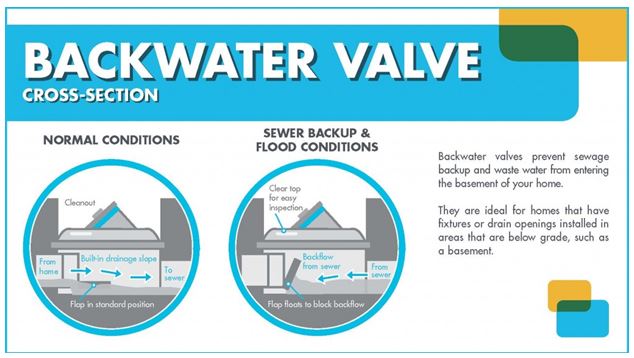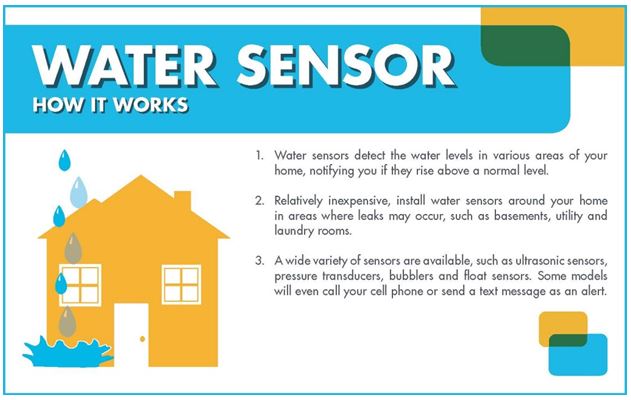Warm weather means spring flooding and sewer back-up. Are you prepared? – Sounds Advice from your Barrhaven Insurance Broker

Warm weather means spring flooding and sewer back-up. Are you prepared? – Sounds Advice from your Barrhaven Insurance Broker
Spring weather is great, but you don’t want to be sprung with unexpected water damage caused by flooding, run-off, melting snow or even steam.
Water damage accounts for 50 per cent of home insurance claims in Canada, even surpassing claims due to fire. With more ways than ever for water to enter and wreak havoc on your home, we want to help you prevent water damage.
With warmer weather on the horizon, there are many forms of snow and ice in and around your home that when melted, may cause damage. The good news is that most types of water damage to your home are preventable.
There are two key types of spring water damage you should be prepared for:
- Spring flooding – includes water generated from spring run-off, melting snow, lake or river overflow or pooling ground water. (Go to “Tips to prevent spring water damage” here.)
- Sewer back-up – occurs when large amounts of water overload a property drainage system. Whether you live in a condo or home, when this water rises above the basement drains, the result is a back-flow of waste water into your home. Not only is this difficult to clean up but can introduce sewage waste into your home, bringing with it black mold and harmful bacteria.
In an effort to ensure you have thoroughly checked your home for water damage risks, examine preventative measures you can take for both the inside and outside of your home.
How to prevent sewer back-up inside your home
The best way to prevent water damage inside of your home is to install one of three key flood prevention devices.

- Backwater Valve
Backwater valves prevent sewage backup and waste water from entering the basement of your home. Normally, this water would drain out of your home through your pipes, but in the event that the municipal sewage or storm water system near your home becomes overloaded, this could force waste water back up through your basement drains. To prevent this waste water from entering your home, during a reversal of flow the backwater valve works to force a closure of the drain. Backwater valves are ideal for homes that have fixtures or drain openings installed in areas that are below grade, such as a basement.

- Sump Pump
A sump pump is used to remove any built-up water in your basement, by pushing it away from the house to a place where it will no longer be problematic, such as a storm drain or dry well. Sump pumps operate by one of two methods: by being hardwired into your home’s electrical system or by being powered by a battery. Selecting a model with a battery backup is a good idea in the event a heavy storm causes your home to lose power. There are also several models available that have a built-in alarm that will notify you if the pump ever fails or suffers a power loss.

- Water sensor
Water sensors detect the water levels in various areas of your home, notifying you if the water rises above a normal level. Relatively inexpensive, we recommend installing water sensors in areas of your home where leaks are common or are more likely to occur, such as basements or utility and laundry rooms.

There are several types of water sensors available for purchase:
- Ultrasonic water sensors – transmit sound waves that reflect off of the liquid surface and are received by the sensor.
- Float water sensors – detect any changes in the resistance of an
internal potentiometer based on water levels. - Bubble water sensors – measure water levels by assessing air pressure of various air-filled tubes. Higher pressure in the tubes is a result of higher water levels as more air pressure is required to fill the tube.
We encourage you to research the type of water sensor right for your home.
Depending on your insurance company, coverage may be available for sewer back-up, water and sewer lines, overland water and ground water. Your BrokerLink broker can go through these coverage details with you.
If you are considering installing a flood prevention device in your home or have done so recently, advise your BrokerLink broker as you could qualify for a discount on your home insurance.
Tips to prevent spring water damage
Seepage into your property through leaks and cracks are the most common form of water damage once the winter snow melts.
Here are some easy steps you can take to prevent flooding and water damage to your home:
| Ways water can enter your home: | How to protect your home: |
| Ice Damming | |
| • As heat rises in your attic, ice will melt as it warms and refreezes when temperatures drop. With this combination, water can start to build within the eaves troughs and under roof shingles. If it has nowhere else to drain, the water can enter from the roof into your home through the insulation and walls, causing water damage and even mold. |
• Remove any ice or snow from your eaves troughs so water can flow freely (for example, use a broom to safely knock down any icicles hanging from the gutters).
• If you wish to remove snow from your roof, do so safely. Do not climb directly on the roof or use a rake to remove snow as both actions may damage your roof. It is best to hire a professional to safely clear snow and ice. • If the extent of ice damming is significant, consider contacting a professional roofer or gutter-cleaning expert. |
| Pooling water | |
| • Melting snow can pool and seep into the soil next to your foundation. Over time moisture may build and “bleed” through your basement walls. | • Be sure to check corners or joints where the wall meets the floor for any seepage. |
| Clogged and overflowing gutters | |
| • Clogged gutters can cause water to spill over the side, down the walls of your home and seep into the foundation. | • Always ensure your gutters are clean and free of debris. |
| Improperly positioned downspouts | |
| • Water and spring run-off that pool too close to your home can seep into your property through leaks and cracks, especially in your foundation. | • Ensure downspouts are positioned away from your home. If needed, utilize an extender to direct water two to three feet away from the foundation. |
Most homeowner’s policies will cover water damage if it is considered sudden and accidental, and is not caused by freezing. Depending upon the insurer, flooding is either not covered or has only limited coverage available, so it is important to take steps to prevent any damage to your property.
If you are unsure whether your current home insurance policy provides coverage, we encourage you to read our complete guide to water damage and your insurance. Here, we cover topics such as when you may not be covered as well as more tips to protect your home from water damage year round.
Taking steps to protect yourself from water damage, including adequate insurance coverage will help give you peace of mind. Your BrokerLink broker can work with you to review your home insurance policy and to identify ways you can further protect yourself.
Related Posts
-
 What is a foot specialist and how can they help me?
No Comments | Apr 11, 2023
What is a foot specialist and how can they help me?
No Comments | Apr 11, 2023 -
 New laws make distracted driving a potentially expensive proposition
No Comments | Aug 18, 2015
New laws make distracted driving a potentially expensive proposition
No Comments | Aug 18, 2015 -
 Barrhaven Seniors’ Council to hold their first annual silent auction
No Comments | Aug 30, 2017
Barrhaven Seniors’ Council to hold their first annual silent auction
No Comments | Aug 30, 2017 -
 A great Barrhaven service provider for children’s parties
No Comments | Apr 7, 2015
A great Barrhaven service provider for children’s parties
No Comments | Apr 7, 2015
